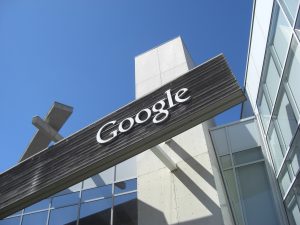Google Compute Engine’s Entry Into the Public Cloud Highlights Industry Pricing War
![]() Google Compute Engine’s (GCE) entry into the public cloud market highlights the pricing war going on amongst the web giants that have begun to commoditize their infrastructure. The playing field in the cloud wars is starting to level in pricing, as all the major players feature comparable pricing.
Google Compute Engine’s (GCE) entry into the public cloud market highlights the pricing war going on amongst the web giants that have begun to commoditize their infrastructure. The playing field in the cloud wars is starting to level in pricing, as all the major players feature comparable pricing.
However, even with comparable pricing, public cloud providers are competing fiercely for market share, and price is an important aspect of their marketing efforts. Infrastructure-as-a-Service (IaaS) is the back-alley street fight for web giants.
Here are a couple examples: Windows Azure has promised to match Amazon AWS on future price reductions, and while both bill by the hour, GCE will bill as low as 10-minute increments. All of the web giants are using pricing as a marketing tactic to attract new clients. The price of the technology platform is far in front of the technology itself in its attempts to gain market share. There are three who are particularly active in the pricing wars: Amazon Web Services, Rackspace, and now GCE.
Amazon Web Services entered the fray, luring users with basic infrastructure at lower costs. AWS has been able to keep pace with Rackspace’s own pricing, matching much of the product line up as well, and now they’re moving into the enterprise space to dominate even more of the market. Now along comes Google, which has a famous infrastructure that’s powering its massive search engines — and its commercializing its infrastructure experience with GCE. Helping to get in front of new users, Google is also able to compete with Amazon on pricing.
In an effort to keep up with the ongoing pricing wars, Rackspace slashed its cloud storage costs by 30 percent back in February. Its open source initiative, OpenStack (now spun off into its own entity), was a hail mary against Amazon Web Services, but the OpenStack effort and its supporters have another web giant to fend off, as Google Compute Engine is here.
![]() So who are the web giants targeting with low prices? Developers and small businesses. AWS and Rackspace are firm leaders in the Infrastructure-as-a-Service market, but Google’s hoping to differentiate with lowered prices, added features and a platform that’s been opened up to additional users. Will Google’s tactics work?
So who are the web giants targeting with low prices? Developers and small businesses. AWS and Rackspace are firm leaders in the Infrastructure-as-a-Service market, but Google’s hoping to differentiate with lowered prices, added features and a platform that’s been opened up to additional users. Will Google’s tactics work?
Google will charge $0.132 an hour for an n1-standard virtual server. That’s roughly equivalent to Amazon’s M-1 medium server. Both come with 3.75 GB of memory, one virtual core CPU and similar disk storage: 410 GB for Amazon and 420 GB for Google. But Amazon is charging only $0.12 an hour, or $.012 less. GCE falls short of Amazon Web Services’ aggressive pricing.
If Google was going after the enterprise space, then why don’t they price-match AWS? Google has deep enough pockets that if it was in the public cloud market to win enterprise customers, it could match AWS. But at that price, they are banking on other differentiating factors other than price to lure away enterprise customers. And furthermore, large enterprises are going to need more than cheap pricing to make them happy.
But wait – is that what Google is banking on? Is Google stacking its deck to compete close enough to AWS, but offer more bells and whistles and a better infrastructure? Is Google basically saying, we’ve built the best and we’ll help you build yours at a reasonable price, even if it’s not the cheapest price? Is Google betting that large enterprise clients will trust Google’s ability to build an infrastructure and scale it more than Amazon?
So what we have is a David (Rackspace) vs. Goliath (Amazon Web Services) vs. Goliah (Google Compute Engine). These three active providers in the public cloud pricing war seem to be in a race to rock-bottom prices. Can Rackspace keep up with the pocketbooks of Amazon Web Services and Google Compute Engine? Stu Miniman from Wikibon said it best:
“In many ways, Amazon AWS sees Google as its primary competitor, as demonstrated by the pricing war being waged between them. The market is not a two horse race, but OpenStack proponents, Microsoft Azure, Rackspace, and others now must compete with two fast-moving Internet giants.”
GCE only shakes up the pricing war of the public cloud even more. And with all of the fighting going on for market share, there is a clear winner: you, the user. By price being such a marketing buy or sell, it means that the option to get the best service for the best price is something that will continue to be in your favor.
Beyond price
We are definitely at the cusp of a big change in infrastructure-as-a-service (IaaS), and pricing isn’t the only factor to consider when weighing the pros and cons of a public cloud provider. Service-Level Agreements (SLAs) is another area you should take notice of. The differentiating factors between service providers is not something to overlook. While not as glamorous as price, SLAs (the fine print), are something you should understand fully before making your choice.
A message from John Furrier, co-founder of SiliconANGLE:
Your vote of support is important to us and it helps us keep the content FREE.
One click below supports our mission to provide free, deep, and relevant content.
Join our community on YouTube
Join the community that includes more than 15,000 #CubeAlumni experts, including Amazon.com CEO Andy Jassy, Dell Technologies founder and CEO Michael Dell, Intel CEO Pat Gelsinger, and many more luminaries and experts.
THANK YOU













